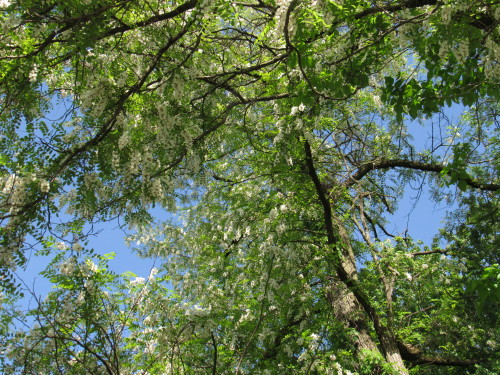#robinia pseudoacacia
Black locust tree in bloom. Robinia pseudoacacia. Whenever they’re in bloom you can hear the cedar waxwings high in the branches nipping the flowers off at the back to steal the nectar. I’ve walked through the woods this time of year but in other years and had blossoms showering around me, their sweet heady scent filling the air, like a preview of paradise.
Post link
The black locust, Robinia pseudoacacia, is an interesting tree that thrives on human disturbance. It has very little shade tolerance, so places like powerline cuts are ideal for it. Although native to the Appalachians and southern Midwest, humans have spread this species as an ornamental and because its nectar produces the coveted “acacia” honey, considered one of the best types. In some places, black locust is considered an invasive species. Of course, where this one was photographed, in the Blue Ridge of northern Virginia, it’s a native species. It’s also a beneficial species there, as, being a member of the family Fabaceae, it has nodules of bacteria that fix nitrogen!
Black locust wood is very hard, and prized for furniture. Although often used for firewood due to its slow burning, I find its wood smells terrible when burned. Most of the plant is poisonous, but the seeds can actually be eaten! I’ve never tried this myself, however.
Post link



